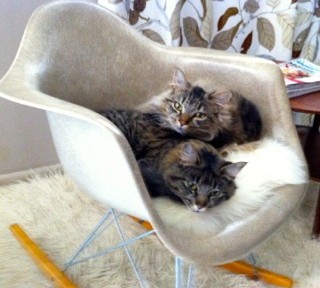Think inside and outside the box, like Harry Houdini did.
Quick, name the top five magicians of the early 20th century! Ok, how about one? Yep, Harry Houdini is still one of the most recognizable names in magic, more than 80 years after his death on Halloween, 1926. Harry is still famous because he was not only an unapologetic self-promoter but also a daringly original performer. While most of us struggle to be creative and think “outside the box”, Harry often found inspiration in constraints. Harry loved limitations of all kinds – handcuffs, chains, ropes, packing crates, straitjackets, you name it. He escaped from all of them and created a new form of entertainment called “escapology”.
Instead of fighting limitations, welcome them. Constraints in time, resources, even limited views of the world can increase your focus and allow you to work within yourself. Which is not to say that expanding your mind and world view are to be avoided. Quite the contrary. But by first tackling a narrow, definable task with a specific goal, you build confidence and momentum that can be applied to tackling those larger, sprawling challenges. That said, be aware of the limiting assumptions and self-talk that can derail your problem solving and resolve to move beyond them:
1. Trying To Find The “Right” Answer
One of the worst aspects of formal education is the focus on the correct answer to a particular question or problem. While this approach helps us function in society, it hurts creative thinking because real-life issues are ambiguous. There’s often more than one “correct” answer, and the second one (or eighth one) you come up with may well be better than your first.
Many of the following mental blocks can be turned around to reveal ways to find more than one answer to any given problem. Try reframing the issue in several different ways in order to prompt different answers, and embrace answering inherently ambiguous questions in several different ways.
2. Logical Thinking
Not only is real life ambiguous, it’s often illogical to the point of madness. While critical thinking skills based on logic are one of our main strengths in evaluating the feasibility of a creative idea, it’s often the enemy of truly innovative thoughts.
One of the best ways to escape the constraints of your own logical mind is to think metaphorically. One of the reasons why metaphors work so well in communications is that we accept them as true without thinking about it. When you realize that “truth” is often symbolic, you’ll often find that you are actually free to come up with alternatives. As Neil Young sang, “Love is a rose, so you better not pick it. It only grows when it’s on the vine.”
3. Following Rules
One way to view creative thinking is to look at it as a destructive force. You’re tearing away the often arbitrary rules that others have set for you, and asking either “why” or “why not” whenever you’re confronted with the way “everyone else” does things.
This is easier said than done, since people will often defend the rules they follow even in the face of evidence that the rule doesn’t work. People love to celebrate rebels like Richard Branson, but few seem brave enough to emulate him. Quit worshipping rule breakers and start breaking some rules for yourself.
4. Being Practical
Like logic, practicality is hugely important when it comes to execution, but it often stifles innovative ideas before they can properly blossom. Don’t allow “the editor” part of your personality into the same room with your open, free, inner artist.
Try not to evaluate the actual feasibility of an approach until you’ve allowed it to exist on its own for a bit. Spend time asking “what if” as often as possible, and simply allow your imagination to go where it wants. You might just find yourself discovering a crazy idea that’s so insanely practical that no one has thought of it before.
5. Play Is NOT Work
Allowing your mind to be at play is perhaps the most effective way to stimulate creative thinking, and yet many people disassociate play from work. These days, the people who can come up with great ideas and solutions are the most economically rewarded, while worker bees are often employed for the benefit of the creative thinkers.
You’ve heard the expression “work hard and play hard.” All you have to realize is that they’re the same thing to a creative thinker.
Stay tuned for Part 2 of “Learning from Houdini”…




